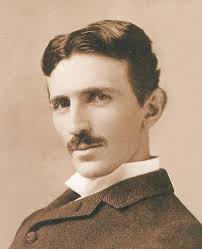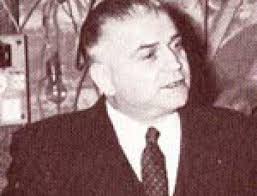In 1895, through the genius of Nikola Tesla, the Niagara Falls Power Company began sending alternating current (AC) to Buffalo, New York, twenty-five miles away. Cities throughout the world followed suit and made commercial AC power available to the general public, even miles from the power generating station. As a result, Tesla’s high voltage loop devices, which were powered by AC, started to become widely known and applied.
In 1898, Tesla published a paper that he read at the eighth annual meeting of the American Electro-Therapeutic Association in Buffalo, New York. He states that one of the early observed and remarkable features of pulsed magnetism was its apparent harmlessness, which made it possible to pass relatively great amounts of electrical energy through the body of a person. Loops up to three feet in diameter were used for magnetically treating the body without contact, though ten to a hundred thousand volts were present "between the first and last turn.” Tesla concludes that bodily "tissues are condensers" in the 1898 paper, which is the basic component (dielectric) for an equivalent circuit only recently developed for the human body. In fact, the relative permittivity for tissue at any frequency from ELF (10 Hz-100 Hz) through RF (10 kHz-100 MHz) exceeds most commercially available dielectrics on the market.
This unique property of the human body indicates an inherent adaptation and perhaps innate compatibility toward the presence of high voltage electric fields, probably due to the high transmembrane potential already present in cellular tissue. Tesla also indicates that the after effect from his loop treatment was certainly beneficial.
Dr. Antoine Priore’s electromagnetic therapy machine was perfected during the 1960’s and early 1970’s while a team of leading French scientists demonstrated conclusive, total remissions of terminal tumors and infectious diseases in hundreds of laboratory animals - all funded by the French Government. Complete remission of the treated diseases was attained, and the animals’ immune systems were all restored to normal.
Antoine Priore began working in 1944-45 on the development of an electromagnetic device which cured cancer. He received backing and help from some very interesting and courageous individuals including the world-famous immunologist Dr. Raymond Pautrizel of the University of Bordeaux, who did all the animal work. Dr. Pautrizel took the research in another direction using the machine to treat sleeping sickness in animals, which was his specialty. Sleeping sickness was of primary concern to Dr. Pautrizel because of its prevalence in tropical countries.
When he injected rabbits with the pathogen trypansome, which causes sleeping sickness, the rabbits would all die within 72 hours. But when exposed to the Priore device, these same rabbits would live. Yet their blood was still teeming with the trypanosomes, which could be extracted from the radiated rabbits and injected into other control rabbits, which would then die. This implies that the machine was doing something electromagnetically to the rabbits’ immune systems such that they were able to fight off a lethal disease which would normally kill them in 72 hours!
Georges Lakhovsky’s philosophy was that "the amplitude of cell oscillations must reach a certain value, in order that the organism be strong enough to repulse the destructive vibrations from certain microbes." He goes on to say, "The remedy in my opinion, is not to kill the microbes in contact with the healthy cells but to reinforce the oscillations of the cell either directly by reinforcing the activity of the blood or in producing on the cells a direct action by means of the proper rays." To prove his point, Lakhovsky’s Radio-Cellulo-Oscillator (RCO) produced low frequency ELF all the way through gigahertz radio waves with lots of "extremely short harmonics." His book, The Secret of Life, was first published in English in 1939. In 1949, a review of Lakhovsky’s work was published as “Waves That Heal” by Mark Clement. Lakhovsky’s theory is that each cell in the body of an organism - be it a plant, an animal, or a human being - is in itself a little radio receiver and works on its own special little frequency. Each cell, in addition to being biological tissue, is also electricity. On that theory, he held that pathology was not a matter of biological concern or intervention but one of electrical concern and intervention. The record of his treatment of degenerative disease, with what amounts to an early "energy-medicine" device, was remarkable and helped further the groundwork Tesla had begun 50 years earlier.
A modern day physicist and inventor Dr. Abraham Liboff is the discoverer of electric-field and geomagnetic ion cyclotron resonance. This theory reliably explains the resonant interaction of static magnetic fields with endogenous AC electric fields in biological systems.
A physicist with Oakland University, he has helped introduce significant physics principles into the field of bioelectromagnetics. His "Method and Apparatus for the Treatment of Cancer" (US Patent #5,211,622) tunes an alternating magnetic field superimposed on a static magnetic field to maintain a combined effect that has the proper cyclotron resonance frequency so that the neoplastic tissue containing a preselected ion can be treated to bring about a decrease in the proliferation rate of the cancer cells. It also can be combined with a chemotherapeutic agent for a synergistic effect. It is noted in the patent disclosure that "up to 100 days of treatment will provide beneficial results.”
A pioneering medical doctor in the 1960’s, Dr. Becker is most famous for his book, The Body Electric, in which he gave an autobiographical account of his life experiences with bioelectromagnetics.
Not only did he establish that the Chinese meridians of the body are skin pathways of decreased electrical resistance, but he also discovered a host of other bioelectric effects within the body as well; for example, the electrostimulating of limb regeneration in mammals. He also worked on electrically stimulating bone growth with Dr. Andrew Bassett, who, along with Dr. Arthur Pilla, developed a very effective PEMF generator to stimulate bone fracture healing, now approved by the FDA with an 80% success rate. Similar PEMF signals recently have been used effectively to prevent osteoporosis even in patients with an ovariectomy.





